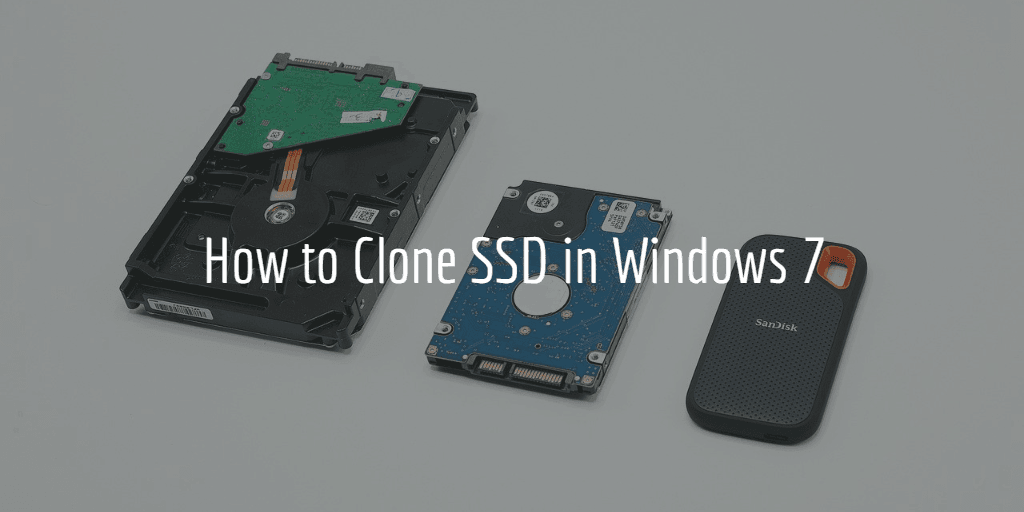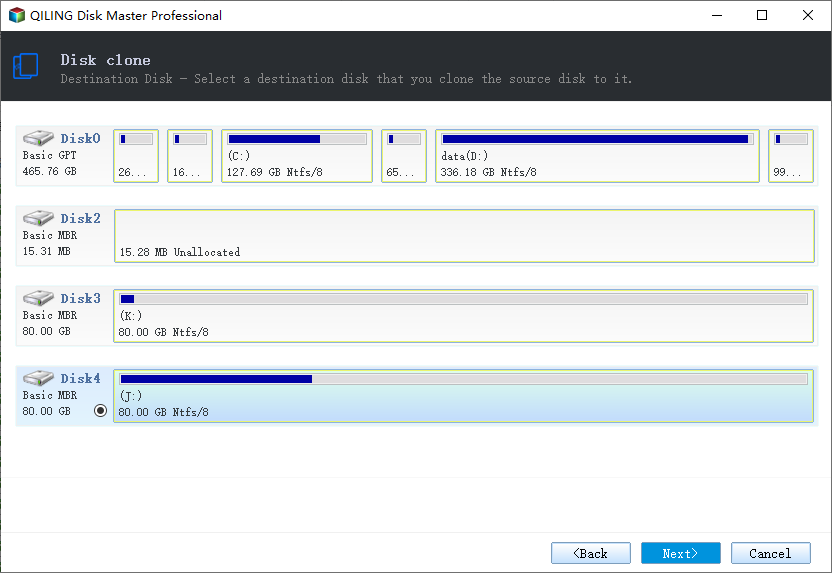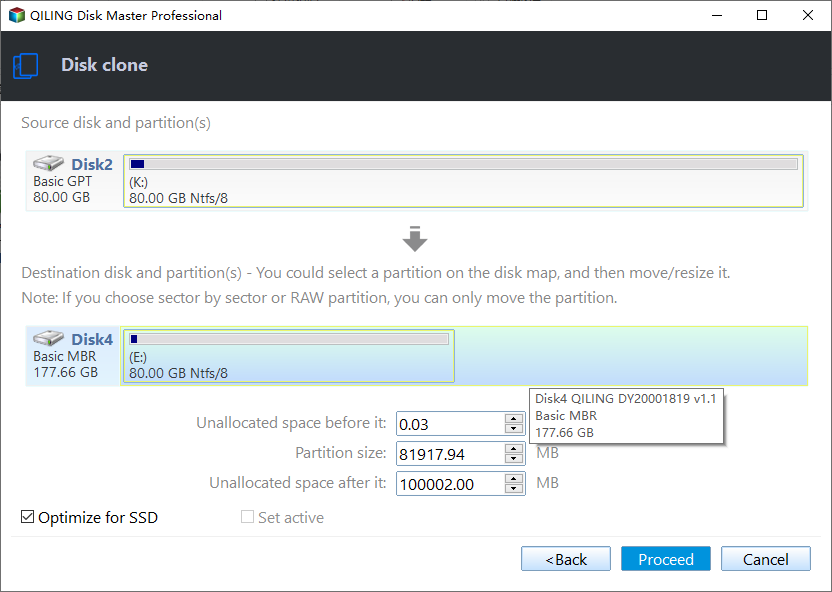How to Clone SSD in Windows 7 Easily Without Losing Data
Quick Navigation:
- Why do you clone SSD in Windows 7?
- Can you clone SSD to another hard drive in Windows 7?
- Preparations before cloning SSD to another SSD
- How to clone SSD in Windows 7 without data loss
- Summary
Why do you clone SSD in Windows 7?
What’s your reason for choosing SSD (Solid State Drive) rather than HDD (Hard Disk Drive)? Is it the high speed of computer booting and data accessing, the low power consumption or the strong durability? Anyway, you should probably know that these advantages are not gratuitous - SSDs are generally more expensive than HDDs for the same capacity. In other words, you usually only get an SSD with less capacity than HDD under the same budget.
When you actually encounter an SSD capacity shortfall in Windows 7/8/10, you can replace the SSD with a larger one, just as replacing HDD with SSD for better performance. But if you don't want to lose the data that you've accumulated for so long, an effective SSD cloning solution is necessary.
Here in this post, we'll talk about related issues such as:
- How to clone SSD to another SSD in Windows 7
- How to clone HDD to SSD in Windows 7
- How to clone only Windows 7 to SSD
Can you clone SSD to another hard drive directly?
You’ve probably thought about migrating SSD to a larger one without transit device like USB or external hard drive . But manual copy & paste is obviously not a safe and quick way - it doesn't applied to hidden files and system files, let along the transmission speed that is relatively low.
In this case, the importance of a quick and reliable cloning tool comes to the fore. It shall be able to clone SSD in Window 7, 8, 10. The operation should be simple enough for an amateur user to master, and there should be rich options to customize the migration until it’s to your satisfactory.
Based on these considerations, I recommend Qiling Disk Master Professional. It supports all Windows OS, and has powerful backup and cloning ability.
With it, you can easily perform disk migration – clone SSD to larger SSD, clone SSD to larger HDD or clone HDD to smaller SSD in Windows 7.
Preparations before cloning SSD to another SSD
Before performing SSD cloning in Windows 7, there are some things to be done first. Take cloning SSD to larger SSD as an example, you need to prepare:
- A target SSD to receive the cloned data
- The cables to connect the second SSD. If it’s a laptop with only one drive bay, you can connect the second drive as an external drive with a SATA-to-USB adapter. If you PC has more than one drive bay, you can install your new SSD without extra connection devices.
- Pick an easy-to-use SSD cloning software and download it
How to clone SSD in Windows 7 without data loss
If you’ve decided to have a try on the tool Qiling Disk Master Professional, you can quickly clone SSD in Windows 7, Windows 8, Windows 10, etc. with Disk Clone feature.
★ It will clone all the stuff on the current boot drive. If your boot disk was initialized as master boot record (MBR), it should include system reserved partition and system drive. If you have partitioned your SSD before installing Win 7, it would not generate a system reserved partition.
★ If your SSD is formatted with GUID partition table (GPT), which requires UEFI hardware support as a boot drive, it will include EFI system partition, MSR partition, Windows recovery partition and system partition.
★ If your computer is HP, Dell, or Lenovo, there is probably a factory recovery partition, which allows you to restore your computer to factory default settings. It may be labeled as OEM partition. Disk clone will also include this recovery partition, so you can also reset computer to factory settings on the cloned SSD.
★ With the default intelligent mode, you are even allowed to clone larger drive to smaller drive (such as clone larger HDD to smaller SSD), because it only copies used sectors to the target disk.
★ If you only want to clone Windows 7 to SSD without changing other partitions on the old HDD or SSD, then you can use the System Clone feature. It allows you to migrate only OS to SSD directly, while other files unrelated to system remain unchanged.
Here's an example to clone SSD to larger SSD in Windows 7. In fact, this approach also applies to cloning HDD to SSD or SSD to HDD - you just need to specify the source disk and target disk accordingly.
How to clone SSD to another SSD in Windows 7:
Steps:
1. Install and launch Qiling Disk Master, select Tools and utilities tab page and choose Disk Clone.
2. Select your current SSD (the disk you wish to clone) as the source, click Next.
3. Specify the destination SSD to clone the source disk to, click Next to continue.
4. Optimize the cloning by Edit Partition, SSD Alignment (recommended) or Sector by Sector Clone according to your needs, then confirm all your operations and click Proceed if nothing is wrong.
◆ SSD Alignment: it’s highly recommended to tick this option if your destination disk is a SSD, since it will accelerate the reading and writing speed for solid state drive.
◆ Sector by Sector Clone: ticking this will clone all the sectors no matter it’s used or not. Otherwise it will only copy used sectors intelligently.
◆ Edit Partition: adjust the partition size and drive letter. It's especially helpful when you want to clone smaller SSD to larger SSD.
5. Wait for the cloning to end, click Finish to exit.
Then you can restart your PC and launch Windows 7 with the larger SSD. The approach was like: restart > get into BIOS with specific key > set cloned drive as the first boot option > save the settings and exit.
Tips:
- The Professional edition supports cloning both data disks and systems disks from MBR to MBR/MBR to GPT, or GPT to GPT/GPT to MBR. If you only want to clone data disks, you can pick the complete free Standard edition.
- After cloning, the destination SSD will be overwritten. You’d better create a backup if there’s any important data on it. Meanwhile, the original drive won’t be wiped out, you can choose to format it, or keep it as a secondary storage.
Summary
Qiling Disk Master enables you to clone SSD to a larger SSD in Windows 7 as well as other Windows OS without losing data, and with the intelligent cloning mode, you are also allowed to clone larger drive to a smaller SSD.
Furthermore, Qiling Disk Master is an excellent backup and restore software. Even after the disk migration has been done, you can use it to back up files and folders, partitions, disks and the system in case of any unwanted data loss and system failures. You can even perform a scheduled automatic backup to protect important data regularly.
Related Articles
- Top 2 Ways to Migrate Windows 7 from HDD to SSD Without Reinstalling
You will learn how to migrate Windows 7 from HDD to SSD with built-in Backup and Restore or Qiling Disk Master Professional. It will greatly enhance your computer without reinstalling Windows. - How to Clone NVMe to NVMe SSD in Windows (2 Ways)?
You got two easy ways to clone NVMe SSD to NVMe SSD successfully in different situations, including cloning via only one slot. - Best Freeware to Clone SSD to New SSD in Windows 10/8/7
The best way to clone SSD to new SSD with larger capacity is using specialized cloning software which helps you clone the entire SSD (Solid State Drive) to your new SSD with the intact stuff. - (Easiest Way) How to Clone 2.5 SSD to M.2 with Best SSD Cloning Software
Do you know how to clone 2.5 SSD to M.2? If you don't, you are coming to the right page. This article will tell you the difference between a 2.5 SSD and M.2 SSD and offer a solution for cloning an M.2 SSD from the 2.5 SSD. After reading this article, cloning 2.5 SSD to M.2 SSD will be a breeze.




